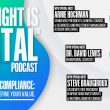On the latest edition of Market Week in Review, Mark Eibel, director, client investment strategies, and Consulting Director Sophie Antal Gilbert discussed the impact of the U.S.-China trade truce on markets, the flattening of the U.S. Treasury yield curve and November’s U.S. employment report.
Wild week for markets in wake of trade-war ceasefire
At a Dec.1 meeting in Argentina, the U.S. and China agreed to refrain from increasing tariffs on each other’s imports for a period of 90 days. Markets initially rose on the news, with the Dow Jones Industrial Average climbing 287 points on Dec. 3, while the S&P 500® Index finished that day up approximately 1%. “That seems so long ago,” Eibel remarked, “as it’s been quite the wild ride ever since.” Major indexes plunged the following day, Dec. 4, as contradictory reports on the details of the trade-war ceasefire and the progression of the trade talks emerged from both sides. “Dec. 4 appears to have been when reality set in for markets,“ Eibel said, “leading to choppiness that accelerated the rest of the week as the U.S. Treasury yield curve sharply flattened.”
Recession worries rise as yield curve flattens
The yield on the benchmark 10-year U.S. Treasury note dropped dramatically the week of Dec. 3, Eibel said, falling from nearly 3% at the start of the week to 2.85% by mid-week. With the yield on the 2-year Treasury note also decreasing to around 2.75%, the spread between long and short-term yields narrowed considerably—to as low as 11 basis points on Dec. 4.
“Over the last 50 years, every time the yield curve has inverted, there’s been a recession in the U.S. no more than 12 months later,” Eibel said, “which is why markets sold off as the curve flattened.” What really put the market on edge, he added, was that the yield on the 5-year Treasury note at one point dropped below that of the 3-year Treasury note—a momentary inversion. “While most economists define a yield curve inversion as occurring when the 10-year yield falls below the 2-year yield, this did mark the first time in quite a while that we’ve seen a shorter maturity have a higher yield,” Eibel explained. This, in his opinion, led to heightened market worries about when the difference between the 10-year and 2-year yield will become negative.
Eibel and the team of Russell Investments strategists believe the yield curve will probably continue to flatten as the month progresses. Why? The U.S. Federal Reserve (the Fed) is likely to increase interest rates at its Dec. 18-19 meeting, he said—and this should drive up the yield on the 2-year note. Meanwhile, worries over slowing economic growth are leading to downward pressure on the 10-year note, Eibel remarked. In addition, he added, economic expectations and inflation both influence the slope of the curve—and both of these factors will likely be somewhat driven by the outcome of the U.S.-China trade situation.
November employment report: Wage gains unchanged as U.S. adds 155,000 jobs
On Dec. 7, the U.S. Bureau of Labor Statistics unveiled the country’s employment report for November, Eibel said. “The key highlight in the report is that there is no key highlight,” he quipped, explaining that the U.S. added 155,000 jobs, while the unemployment rate remained steady at 3.7%. Average hourly pay, which has garnered increasing attention this year, also matched October’s year-over-year increase at 3.1%, Eibel noted.
“These numbers are some of the last real data points to be released prior to the Fed’s upcoming meeting—and I think they won’t alter the central bank’s decision on a final rate increase for 2018,” he stated. In his opinion, it’s highly likely that the Fed will raise interest rates later this month—as the numbers appear to confirm that there’s probably still enough strength in the U.S. economy to justify a hike. “The real focus, in my view, is what the Fed does at its March 2019 meeting,” Eibel stated, concluding that he and the team of Russell Investments strategists believe there’s an above-average probability that the central bank will raise rates then as well.
Watch the video or listen to the podcast. And subscribe.















